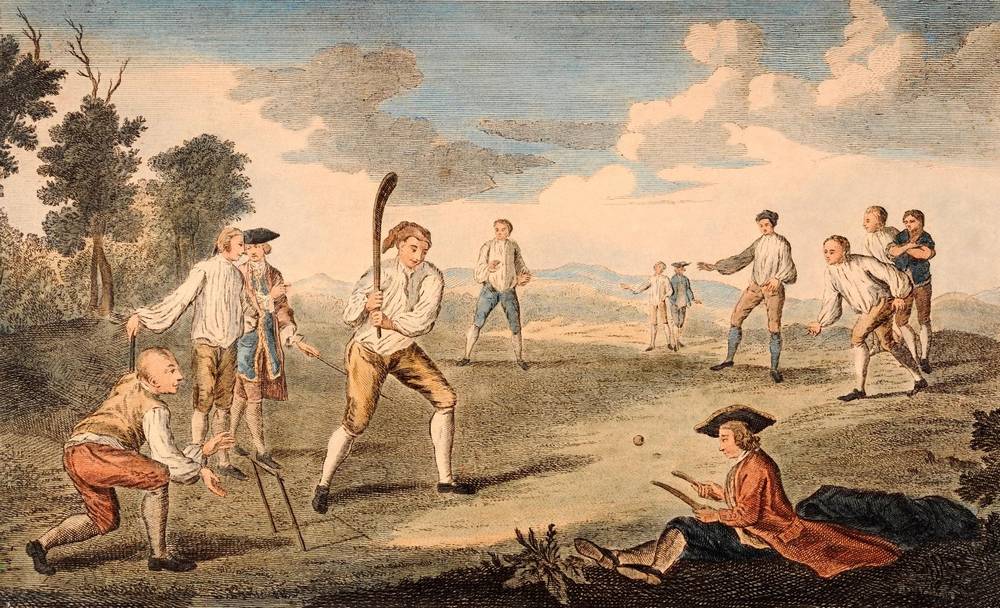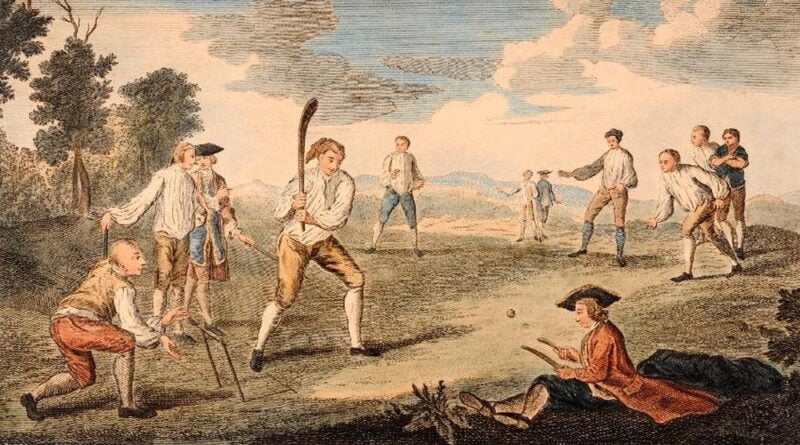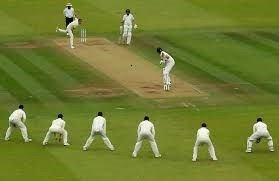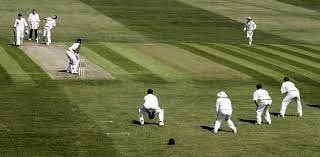A brief history of cricket
Cricket, gentleman’s game, is a bat-and-ball game played between 2 teams of eleven players on a field at the center of which is a 22-yards (20-metre) pitch with a wicket at each end, each comprising two bails balanced on three stumps. It is one of the most played game in the globe. It has a great history, invented in England and spread by The British Emperors who ruled the world and now practiced by most of the nations.

Cricket, England’s national sport, which is now played throughout the world was originated from the south-eastern England. It is generally believed that cricket survived as a children’s game for many generations before it was increasingly taken up by adults around the beginning of the 17th century. Cricket was created during Saxon or Norman times by children living in the Weald, an area of dense woodlands and clearings in south-east England that lies across Kent and Sussex. The name itself may originate from Old English “cryce/cricc” which means crutch or staff. The meaning of “cryce” is stick and in Old French, “criquet” also means club or stick. There are mentions from experts that cricket may not have originated in England but in Flanders. Heiner Gillmeister, a European language expert from Bonn University, claims that “cricket” derives from the Middle Dutch phrase for hockey, “met de sen (krik ket)”. He suggested that the name and the whole sport may be Flemish, not English.

The earliest documented mention of adults playing cricket came from 1611, when two men were fined 12d each for failing to attend church on Easter Sunday because they were playing cricket. Around the same time, that was the first organized cricket match played in Chevening, Kent. A few years later, in 1624, we can find cricket’s first death, in Sussex. Jasper Vinall died because another player accidentally struck him on the head. For all of the 17th century, cricket remained a local game played in England. In 1664, Parliament passed the Gambling Act, and since in cricket people used to bet on which team was going to win, the sport was included in regulations. At the end of the 17th century, cricket became a significant sport and spread throughout England and abroad because of mariners and colonizers. The first mention of cricket overseas is from 1676. A 1697 newspaper report talks about a great cricket match played in Sussex for fifty guineas apiece.
In the middle of the 19th century, cricket established itself in Australia, the Caribbean, Indian subcontinent, New Zealand, North America and South Africa and so in every corner of the world where the British Empire managed to reach. In 1844, the first-ever international match took place between the United States and Canada. Fifteen years later, an English team travelled overseas to play in the USA tournament for the first time. 3 years later, English players made a tour to Australia. In 1868, the Australian team of Aboriginal stockmen toured England.
In the 20th century, Test cricket expanded. The following countries joined: West Indies (1928), New Zealand (1930) and India (1932) before the Second World War and then Pakistan (1952), Sri Lanka (1982), Zimbabwe (1992), Bangladesh (2000), Ireland and Afghanistan (both 2018). South Africa was banned from international cricket from 1970 to 1992 due to the apartheid boycott.

Until early in the 19th century all bowling was under-armed, then came “the round-arm revolution,” in which many bowlers began raising the point at which they released the ball. In 1835 the MCC rephrased the law to allow the hand to be raised as high as the shoulder. The new style led to a great increase in bowling speed. Gradually bowlers raised the hand higher and higher in defiance of the law. In 1862 Surrey left the field at London’s Kensington Oval in protest over a “no ball” call (i.e., an umpire’s decision that the bowler has thrown an illegal pitch). The argument centered on whether the bowler should be allowed to raise his arm above the shoulder. As a result of this controversy, the bowler was in 1864 officially accorded liberty to bowl overhand (but not to cock and straighten the arm). This change dramatically altered the game, making it yet more difficult for a batsman to judge the ball. A bowler was allowed to take a running start from any direction and for any distance. Once the bowler was allowed to release overhand, the ball could then reach speeds above 90 mph (145 km/hr.). Though this is not as fast as the pitching speed in baseball, cricket has an additional twist in that the ball is usually delivered so as to bounce on the pitch (field) before the batsman can hit it. Thus, the ball may curve to the right or the left, bounce low or high, or spin toward or away from the batsman.
Batsmen learned to protect themselves with pads and batting gloves and a cane handle increased the resilience of the bat. Only the best batsmen, however, could cope with fast bowling, because the poor condition of most pitches made it yet more difficult for a batsman to predict the motion of the ball. As the grounds improved, however, batsmen grew accustomed to the new bowling style and went on the offensive. Other new bowling styles were also discovered, causing batsmen to adjust their technique further. In the early 20th century so many runs were being scored that debate ensued on reforming the “leg-before-wicket” Law, which had been introduced in the 1774 laws to prohibit a batsman from using his body to prevent the ball from hitting his wicket. But the heavy scores were actually due to the performances of several outstanding batsmen, such as W.G. Grace, Sir John Berry Hobbs, and K.S. Ranjitsinhji (Later the maharaja of Nawanagar). This was cricket’s golden age.
The rules of Cricket are changing throughout its lifetime and it will keep changing in future as well. Now a days 3 types of cricket matches is played across the world, those are; test cricket (5 days long and both teams have to play 2 innings in a match), one-day cricket (each team have to bowl at most 50 overs), t-20 cricket (each team have to bowl at most 20 overs in a match). Locally t-10 league and 100 bowls game is being played recently. It is a funny game and have a long history.
Sources:
1. What are cricket’s origins, WISDEN,
2. History of cricket, Wikipedia
3. Cricket, britannica.com.
4. Internet
শিক্ষাবর্ষঃ ২০১৯-২০

















